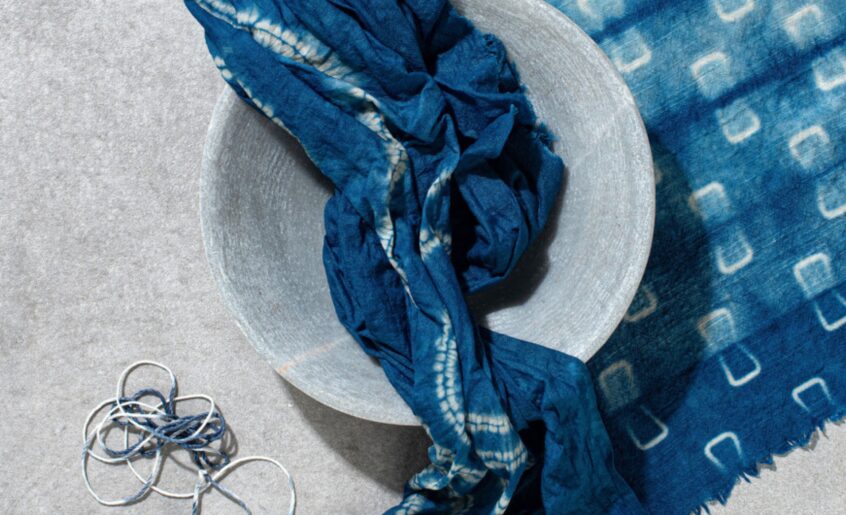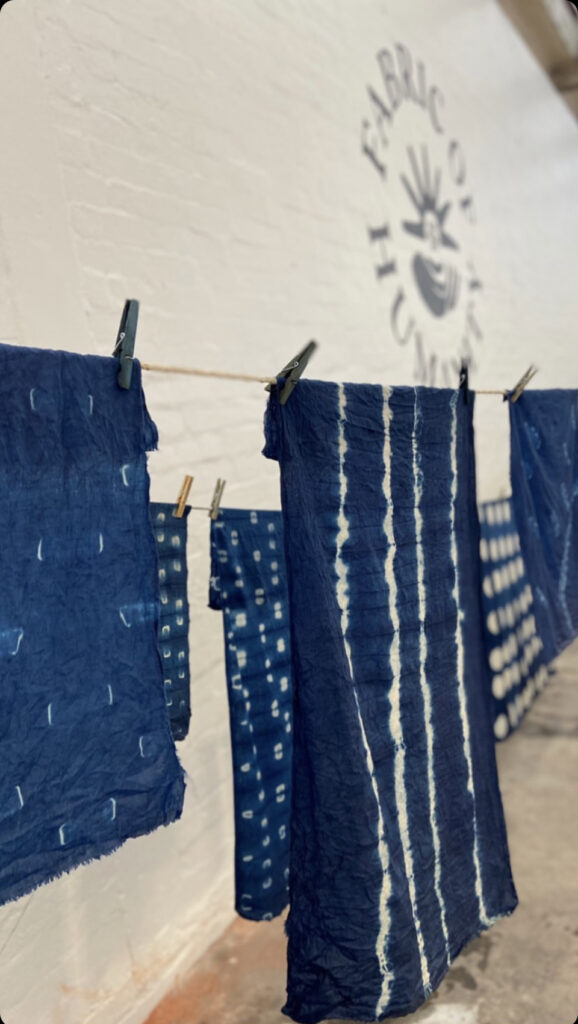Shibori Story

As you may know, Shibori is a traditional fabric dying technique which has been practiced in Japan for 1300 years. It’s believed that Shibori was among the goods donated by the Emperor Shoumu to the Toudai-ji Buddhist temple in Nara in the 8th century.
These traditional methods are still used today, and are thought to have originated in China.
What I didn’t realise until recently, is that the history of Shibori resonates utterly with the whole reason I took on Fabric of Humanity, a company created for the fashion industry, which needed to refocus on end consumers because of covid-led changes to the local textile industry…
According to the Craft Atlas, Shibori dying in indigo was especially popular amongst the lower class in feudal Japan. Unable to afford expensive fabrics like cotton and silk, cheap hemp clothing was widespread. This was particularly the case during the Edo period when the lower class was forbidden from wearing silk. Shibori emerged as a technique to renew old, faded, stained and damaged clothes.
For me – the appeal was precisely to help people elevate their wardrobes by upcycling them, adding colour, breathing new life into tired bed linen and napery… With so much consumer awareness around disposable fashion, and the demand for more sustainable practises, I saw this as a golden opportunity to help make a difference, whilst encouraging people to adopt new, mindful and creative hobbies.

During the peaceful Tokugawa Era in Japan, from the 17th to 19th century, when trade, arts and culture flourished, shibori further developed and took on a wider appeal. Many different regional techniques emerged and shibori became popular for not only the hemp dying of the lower class, but also for decorating silk for the aristocracy, who would commission artisans to create stunning kimonos. Methods differed from region to region and the art continued to develop at all social levels.
Which gives me hope that maybe, with a bit of creativity and experimentation, our efforts to create beauty with the humblest of materials, will result in the creation of something so desirable, it barely looks humble at all.